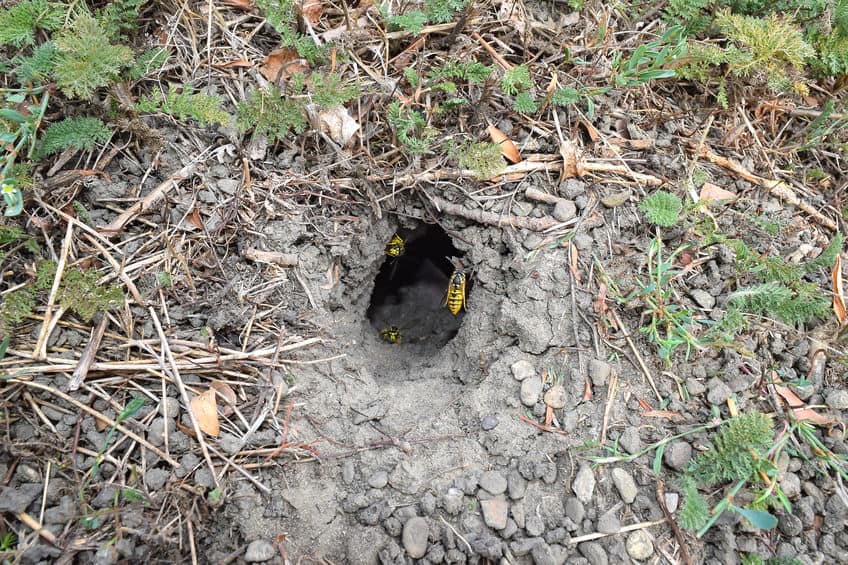There are thousands of wasp species with some constructing nests underground and others above ground.
Many wasp species build their nests underground including Vespula yellow jackets, Asian hornets, and many solitary wasp species. Most social wasps species will make these nests in existing voids and establish a paper nest inside. Solitary wasps will often dig small burrows and have evolved stronger front legs for this purpose.
Let’s take a closer look at the nesting habits of different wasp species.
Yellow jacket nests
Yellow jackets are defined as wasps from the Vespula and Dolichovespula species of wasp. Vespula yellow jackets typically build their nests in underground voids. Dolichovespula, however, typically do not build their nests underground. Despite their name and categorization Dolichovespula wasps are identifiable by their black and white coloration. The bald-faced hornet is actually not technically a hornet at all, but rather a Dolichovespula yellow jacket. The fact that they typically build their nests above ground may explain why they gained this erroneous name.
The nests built underground still have paper honeycomb structures just like those in nests found above ground. Yellow jackets do not dig out their own cavities but rather take over old burrows from a variety of animals including moles, gophers, rats, and any other digging animal.

Hornet nests
Most hornets build their nests above ground in trees and shrubs, but the Asian hornet, including the giant hornet or murder hornet, are more likely to build their nests underground. Like almost all social wasps, they make their nests from wood pulp.
Paper wasp nests
Paper wasps do not construct their nests underground. They are typically open structures that resemble something like an upside umbrella. For this reason, they are also often referred to as umbrella wasps. They are often found under the eaves of houses, in trees, and in other such sheltered areas. Because paper wasps build their nests in more visible areas it might explain how they got their name, although almost all social wasp species, including hornets, build their nests from paper.
Solitary wasp nests
Solitary wasps will often dig burrows or use existing cavities underground. Unlike social wasps, they do not use paper to construct nests as they do not live in colonies.
Solitary wasps are often parasitoids meaning they feed their young on live hosts, usually spiders, caterpillars, and other such insects. These wasps will drag an animal to its burrow after paralyzing it. They will then lay an egg on or next to the paralyzed animal before blocking the entrance to the burrow and then leaving forever.
These wasps will often move the earth about the entrance to a burrow to camouflage its existence before leaving. When the eggs hatch the larvae feed off the paralyzed hosts until they have fully developed into wasps. Examples of solitary wasps that build burrows underground include spider wasps.
The prothorax, the first part of the wasp, is highly developed in these species because they use their front legs for digging. They also tend to have longer legs than most social wasp species.
